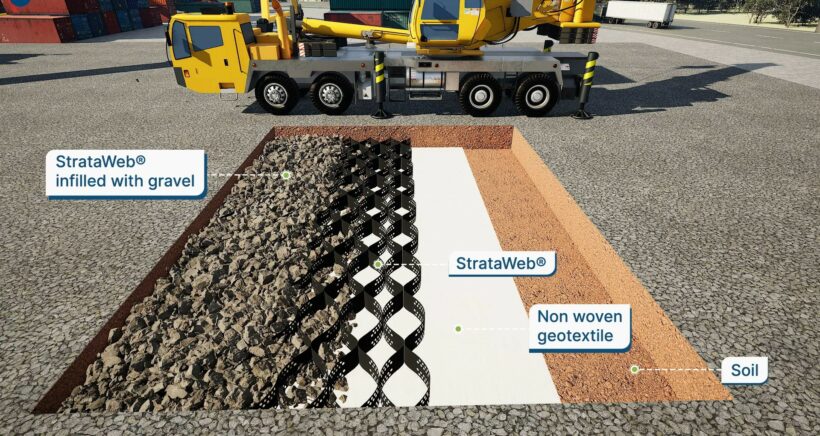Crane pads
What are crane pads?
Civil engineering is a vast concept with many facets. Each stage, from designing to executing the designs, has its importance. The construction stage is the most important of all. Choosing materials to put each piece together involves mental and physical hard work. Construction also requires heavy machinery and vehicles that contribute in different ways. One of them is the crane, a heavy vehicle that helps lift and move heavy-weighted materials from one place to another. Although cranes are powerful automobiles, they also require safety.
This is where the crane pads come into the picture. Let’s further understand the importance, types and uses of crane pads.
Cranes have a unique feature called outriggers. These outriggers help the crane maintain its balance while lifting heavy-weighted material. Engineers use crane pads to ensure high safety. Usually round, the crane pad is essential in distributing the weight equally on both the outriggers. It is made of durable UHMW polyethylene, which essentially supports the outriggers to stay sturdy while bearing heavy loads. It also provides protection against corrosion, disintegration and rusting. Crane pads are lightweight and easy to handle. They are designed to handle heavy vertical pressure.
Importance of crane pads
Crane pads and outrigger mats are essential in balancing and distributing the heavy load equally. Here are some reasons that explain the importance of crane pads:
- Safety is one of the most important reasons that make crane pads essential. They prevent the outriggers from sinking into the soft surfaces and provide stability. This helps in avoiding unwanted accidents at the construction site.
- Crane pads equally distribute the heavy load on both outriggers, preventing damage caused by uneven weight distribution. This is advantageous on soft surfaces.
- Another critical aspect of the crane pad is levelling. It ensures the crane is level on uneven ground, ensuring safety, accuracy, and enhanced lifting performance.
- Crane pads help enhance the crane’s efficiency by providing more efficient weight lifting.
Uses of crane pads
Crane pads have multiple uses, which include the following:
- Crane pads are essentially used in construction sites. They provide extensive support to weighted vehicles like cranes for the smooth lifting of heavy loads. It creates a stabilised base for the crane.
- Two vehicles often use crane pads when they have to recover a vehicle. These pads give the tow vehicle undue support to lift the vehicle’s weight.
- Cranes are required when wind turbines need maintenance. These cranes operate on delicate surfaces, and crane pads provide essential support.
- Cranes are used for logistics, loading and unloading cargo from ships and aircraft. These cargoes have heavy loads. Crane pads are used to maintain balance and safety. These crane pads support the outriggers and evenly distribute the weights.
Types of crane pads
Crane pads are essential for cranes while lifting heavy weights. Crane pads are available in different types:
- Plastic: Plastic crane pads are more durable and light as compared to other crane pads. Because of their composition which is mainly plastic, these crane pads are also heat-resistant.
- Composite: Composite crane pads offer more strength, durability, and load capacity than plastic ones. However, they are slightly heavier than HDPE crane pads.
- Timber: Although wood or timber crane pads are pocket-friendly, they are not durable. They constantly require maintenance and are more prone to swelling and rotting.
- Aluminum: Although aluminum pads are more durable, they are a bit costly. Because of the metal used in these crane pads, the strength capacity is also reduced as compared to composite crane pads.
How are crane pads installed?
Crane pad installation is an easy process. It can be installed with these simple steps listed below:

- Arranging the site: Step 1 is to clear the site area where the crane pads are required to be installed. This includes removing unwanted debris from the surface that can cause accidents.
- Positioning the pad: The next step is to position the pad under the outriggers on the marked points.
- Flattening of the surface: While installing the crane pads, make sure to level the surface. This provides proper adjustments for the outriggers.
- Placement of crane pads: The last step is to place the crane pads as per the crane’s placement. It should efficiently be placed under the outriggers.
To know more about installation of crane pads and how geosynthetics help in ground support for the crane pads, please check out this case study. Click here.
Factors to consider while selecting the crane pads
The selection of crane pads requires a particular checklist. Here are some factors listed below:
- The first and foremost factor is the crane pad’s load capacity. It should have more load capacity than the crane itself.
- The surface area also plays a vital role while selecting the crane pad. Ensure the ground type, soil density and location.
- The next factor to consider is the frequency of use. If it is high, consider buying high-durability crane pads.
- The crane pad should be proportionate to the outriggers. Ensure to buy the proper size and dimensions of the crane pad.
Crane pads provide essential support to outriggers. They help in providing more efficient and safe usage of the cranes. Choosing an appropriate crane pad is the responsibility of the engineer. For this, they consider some important factors like durability, dimensions, and capacity.
